Search
forLearn
5 / 65 resultslearn Osteopontin
signaling protein that, when suppressed, may grow hair by reducing inflammation and stem cell loss
learn Exosomes
Microscopic delivery system that sends growth-promoting signals to hair follicles
learn Platelet-Rich Plasma
growth factors taken from your blood and injected into your scalp to stimulate hair
learn Follistatin
glycoprotein that inhibits TGF-β and promotes hair growth by antagonizing activin
Research
5 / 1000+ results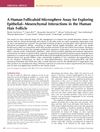
research A Human Folliculoid Microsphere Assay for Exploring Epithelial-Mesenchymal Interactions in the Human Hair Follicle
HFMs can help study hair growth and test potential hair growth drugs.
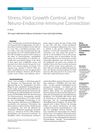
research Stress, Hair Growth Control, and the Neuro-Endocrine-Immune Connection
Stress may affect hair growth by influencing hair follicle development and could contribute to hair loss.
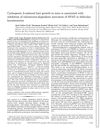
research Cyclosporin A-Induced Hair Growth in Mice Is Associated with Inhibition of Calcineurin-Dependent Activation of NFAT in Follicular Keratinocytes
Cyclosporin A helps mice grow hair by blocking a specific protein activity in skin cells.
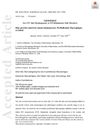
research Hair Growth Control by Innate Immunocytes: Perifollicular Macrophages Revisited
Immune cells around hair follicles help control hair growth and could be targets for treating hair disorders.
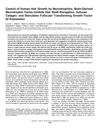
research Control of Human Hair Growth by Neurotrophins: Brain-Derived Neurotrophic Factor Inhibits Hair Shaft Elongation, Induces Catagen, and Stimulates Follicular Transforming Growth Factor Beta 2 Expression
Brain-Derived Neurotrophic Factor (BDNF) slows down hair growth and promotes hair follicle regression.
Community Join
5 / 1000+ resultscommunity Physio-metabolic method of treating androgenic alopecia. Cold receptors. The relationship between DHT, cold receptors, minoxidil and antiandrogens.
A method for treating androgenic alopecia using minoxidil, antiandrogens, exercise, and cold exposure to promote hair growth. Environmental factors and lifestyle changes, like diet and exercise, can improve treatment effectiveness.
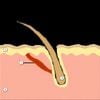
community Physio-metabolic method of treating androgenic alopecia. Cold receptors. The relationship between DHT, cold receptors, minoxidil and antiandrogens
Treating androgenic alopecia with minoxidil, finasteride, and antiandrogens, alongside exercise, cryotherapy, and natural substances to stimulate cold receptors for better hair growth. The method focuses on enhancing treatment effectiveness by considering environmental and behavioral factors and the role of cold receptors and muscle stress.
community PSA: Most men who stay on Fin will see the sexual side effects go away. Stop the fear mongering
Finasteride can cause sexual side effects in less than 2% of men, but these often disappear over time, even if the treatment continues. Some users report persistent side effects, while others experience no issues or only temporary ones.
community So we have 20k dollars human like machines available but no new effective treatment for hairloss since finasteride :)
There have been no new effective hair loss treatments since finasteride, despite technological advancements. Current treatments include finasteride, minoxidil, and RU58841, with ongoing challenges and potential future solutions in research.
community IGF-1 and Peptides? Miracle molecule waiting to be found
The conversation discusses potential hair loss treatments focusing on stimulating IGF-1 at the follicle level using growth-factor cocktails and engineered peptides, such as Acetyl Tetrapeptide-3, Copper Tripeptide-1, Oligopeptide-20, Thymosin-β4, and Palmitoyl Tetrapeptide-7. It suggests that device-assisted delivery methods like microneedling may enhance effectiveness.